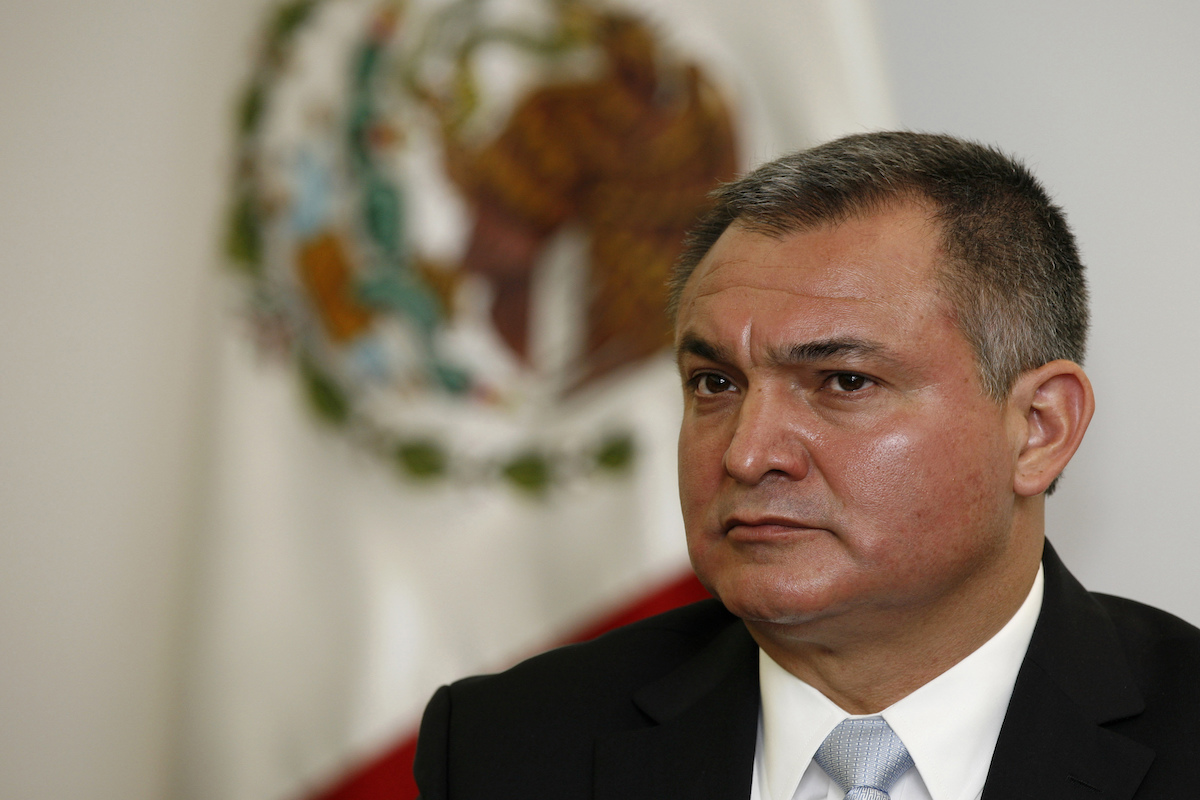

In this October 8, 2010 file photo, then Mexico’s Secretary of Public Safety Genaro García Luna attends a press conference in Mexico City. (AP Photo/Marco Ugarte, File)
MEXICO CITY (AP) — Mexico’s top financial investigator on Friday reported on the webs of corruption and money laundering that thieves, traffickers and political figures have used to hide their wealth.
Santiago Nieto, the head of Mexico’s Financial Intelligence Unit, said a federal judge took bribes to rule in favor of the violent Jalisco cartel, and then used a lawyer’s office to buy vehicles and send as much as $2 million to the United States.
Another gang stole fuel from government pipelines and set up trucking companies to use the diesel and launder profits from sales of fuel to third parties.
Nieto revealed that a sex ring trafficked as many as 2,000 South American women into prostitution in Mexico over the course of a decade. They used front companies and web sites to charge for their services and distribute profits.
He said there were over $100 million in suspicious deposits and transfers to accounts linked to he former head of the country’s state-owned oil company.
Nieto said government money was channeled into a web of companies that sent about $2 million, and perhaps much more, to relatives of the country’s former top security official.
That official, former Public Safety Secretary Genaro García Luna, is being held pending trial in the United States for allegedly taking bribes from the Sinaloa drug cartel.
Nieto said a web of companies got tens of millions in Mexican government contracts for security software, and later channeled some of the money through Panama to García Luna, who lived in Miami, Florida after leaving public service in 2012.
García Luna, 51, was indicted on three counts of cocaine trafficking conspiracy and a false statements charge in New York. He waived his right to a detention hearing in Dallas a week after the federal case against him was made public in New York City.


